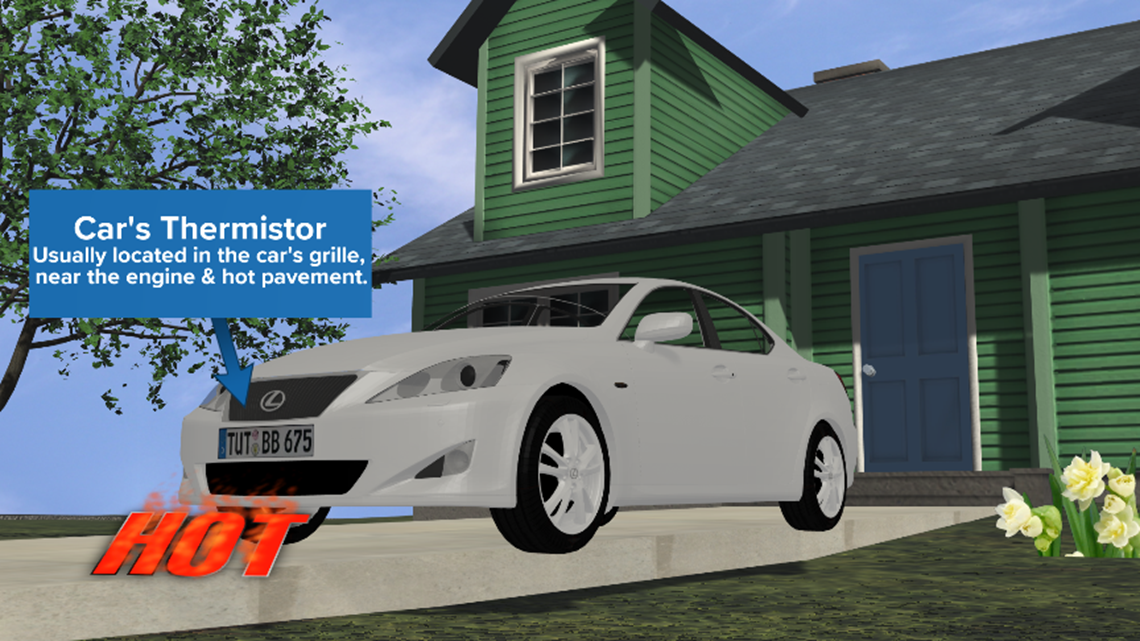AUSTIN, Texas — Cars have become impressively well equipped with all types of gadgets, gizmos and technology. However, there's one feature on most cars that is almost always wrong. It's your outdoor temperature reading on your dashboard.
When temperatures soar in Central Texas, we all dread that walk to your car after it has been sitting in direct sunlight all day. The forecast may have only called for high temperatures in the mid 90s, but your car's dashboard reads something insane like 115 degrees. If Austin did indeed get to 115 degrees, it would break the all-time record high of 112 (set twice in 2000 and 2011) by three degrees.
So let's focus on why these temperature readings from your car are almost always wrong. First off, instead of using a thermometer to measure the temperature, cars are equipped with what's called a "thermistor." While most thermometers use liquid mercury to measure temperature, thermistors measure the reaction to an electrical current when temperatures fluctuate.


Now, we've all at one point or another stepped barefoot onto a hot pavement. It may be 95 degrees outside, but the asphalt could be as hot as 140 degrees.
That scorching hot pavement is one of the primary reasons why your car almost always displays a hotter outside temperature. Nearly all thermistors are located just behind the grill of your car, right in front of the engine and above the hot asphalt. Not only is it located in a hot, metal box, but it's low enough to the ground that it actually picks up the heat radiated up from the surface of the pavement. So, it's not necessarily that the reading is wrong, it's the location of the temperature the thermistor is reading.


Thermistors will show you a more accurate temperature at night when the pavements have cooled off and are no longer in direct sunlight. For the same reason, you will find a more accurate temperature on cloudy days.
However, readings get tricky during the winter months, as the road you are driving on could be freezing but your car's reading a temperature slightly above freezing. This could give you a false sense of security that there is no black ice.
With so many different ways to take a temperature reading in the meteorological world, air temperatures are what's used for official use. In recording temperatures for official use in meteorology, there are hundreds of weather observation sensors around the country that use liquid mercury thermometers.
The most accurate way to measure the air temperature is in complete darkness, or as sheltered from direct and indirect sunlight as possible. Most official temperature readings actually use a radiation shield that protects the thermometer from direct and indirect sunlight.
Given the most accurate way to take the air temperature, it's easy to see why it can be vastly different than the temperature your car's thermistor displays.
In all, is your car's outdoor temperature fun to check out as the temperatures soar, or we get a cold front and they drastically change throughout the day? Yes, absolutely! Are they an accurate reading of what the official air temperature actually is? Unfortunately not. But, you can always check your KVUE app, kvue.com, or watch KVUE live to get the most accurate temperature for your area.
PEOPLE ARE ALSO READING:

